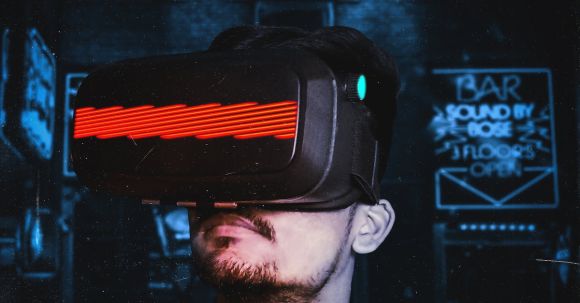Augmented Reality (AR) has come a long way since its inception, and its evolution in the tech industry has been nothing short of remarkable. This immersive technology has the ability to blend the real and virtual worlds, enhancing our perception and interaction with our surroundings. With the advancements in hardware and software, AR has become more accessible and has found its way into various industries, revolutionizing the way we work, play, and learn. In this article, we will explore the exciting developments in augmented reality and its impact on the tech industry.
Enhancing User Experience
One of the significant ways augmented reality is evolving in the tech industry is by enhancing user experience across different sectors. AR applications are no longer limited to gaming and entertainment. They are now being used in fields such as healthcare, education, manufacturing, and retail. For example, in healthcare, AR is being used to simulate surgeries, allowing medical professionals to practice and improve their skills in a risk-free environment. In education, AR is transforming classrooms by providing interactive and engaging learning experiences. Students can visualize complex concepts and interact with virtual objects, making education more immersive and effective.
Improvements in Hardware
The evolution of AR in the tech industry can be attributed to the advancements in hardware. In the past, AR was primarily experienced through smartphones and tablets. However, with the introduction of wearable devices such as smart glasses and headsets, AR has become more immersive and hands-free. Companies like Microsoft with their HoloLens and Magic Leap with their Magic Leap One have pushed the boundaries of what is possible with AR hardware. These devices offer a wider field of view, higher resolution, and more accurate tracking, providing users with a truly immersive AR experience.
Advancements in Software
Alongside hardware improvements, there have been significant advancements in AR software that have fueled its evolution in the tech industry. Software development kits (SDKs) such as ARKit for iOS and ARCore for Android have made it easier for developers to create AR applications. These SDKs provide tools and frameworks that enable developers to build AR experiences without having to start from scratch. Additionally, computer vision algorithms and machine learning techniques have made AR more intelligent and responsive. AR applications can now understand and interact with the real world in real-time, making the user experience more seamless and natural.
Integration with Other Technologies
Another way augmented reality is evolving in the tech industry is through its integration with other technologies. AR is often combined with other emerging technologies such as artificial intelligence (AI) and the Internet of Things (IoT) to create more powerful and context-aware experiences. For example, AR can be used in conjunction with AI to recognize objects and provide relevant information in real-time. In the retail industry, AR is being used to enable virtual try-on experiences, allowing customers to see how products will look on them before making a purchase. By integrating AR with other technologies, the possibilities for innovation and creativity are endless.
The Future of Augmented Reality
As AR continues to evolve in the tech industry, its future looks promising. With ongoing advancements in hardware, software, and the integration with other technologies, we can expect even more immersive and transformative AR experiences. The adoption of 5G networks will also play a significant role in the evolution of AR, providing faster and more reliable connections for AR applications. Additionally, as more industries recognize the potential of AR, we can expect to see its widespread implementation across various sectors.
In conclusion, augmented reality is evolving rapidly in the tech industry, enhancing user experiences, and finding its way into diverse sectors. With advancements in hardware, software, and integration with other technologies, AR is becoming more immersive, intelligent, and accessible. The future of AR holds immense potential, and we can look forward to a world where augmented reality seamlessly integrates with our daily lives.



